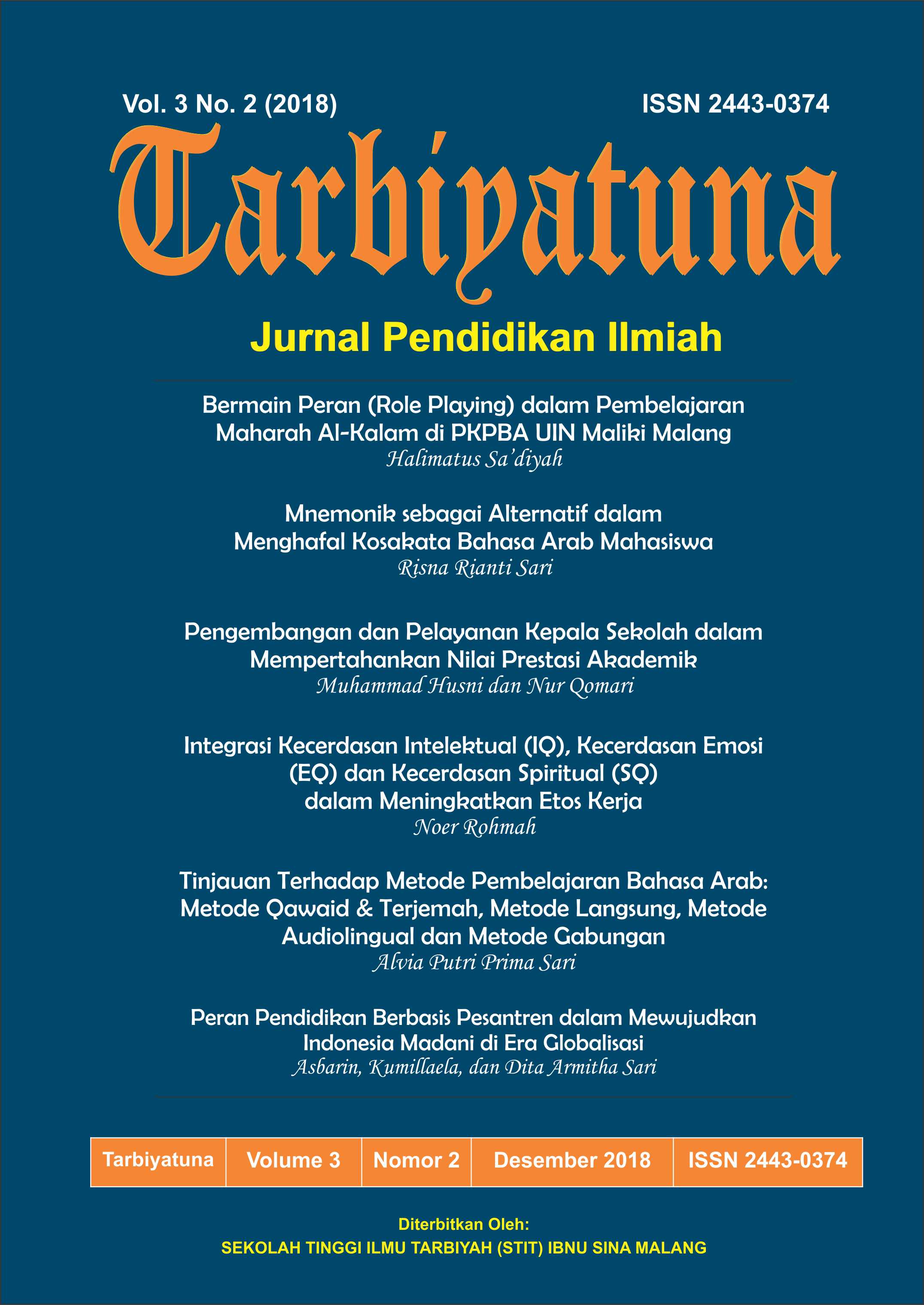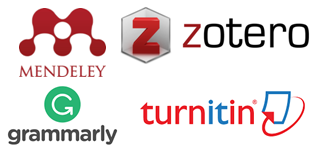Mnemonik Sebagai Alternatif dalam Menghafal Kosakata Bahasa Arab
Abstract
In fact, vocabulary cannot be separated from language learning. It was neglected in language teaching programs in order to help the learners understand the language effectively. Nowadays, many researchers have realized that vocabulary is an important part of language learning and teaching. The purpose of the study were to introduce the technique called “Mnemonic†to Arabic student learners in college. The aim also to explore their creativities during the class by this method in terms of short-term and long-term retention. Students of Arabic learning program, however, reported to frustrate when they face with new words, since they have difficulty retaining them. This mnemonics devices can be used to solve this problem and to improve their Arabic vocabulary learning, Many kinds of mnemonic can be used to help the learners, there are story method, keyword method, and imagery link. The kinds of mnemonic are undeniably an effective method for accelerating learning of Arabic vocabularies because it improves immediate recall. Beside aid the memory for memorizing vocabularies, this mnemonic also makes the Arabic learning process enjoy and the other words mnemonic is a fun method of learning which makes the retrieval process easier by bridging the meaning of words with related the brain hemisphere both right and left brain. Here we will consider the usefull of the method and how to apply it .
References
Amiryousefi, M., & Ketabi, S. (2011). Mnemonic Instruction: A Way to Boost Vocabulary Learning and Recall. Journal of Language Teaching and Research, 2(1). https://doi.org/10.4304/jltr.2.1.178-182
Anari, F. K., Sajjadi, M., & Sadighi, F. (t.t.). The magic of mnemonics for vocabulary learning of a second language. International Journal of Language and Linguistics, 6.
Ardika, Y. (2016). Efektivitas Metode Mnemonik Ditinjau dari Daya Ingat dan Hasil Belajar Matematika Siswa Kelas X TPA SMK N 2 Depok Sleman. Kreano, Jurnal Matematika Kreatif-Inovatif, 7, 66–73.
https://doi.org/10.15294/kreano.v7i1.5006
Cohen, A. D. (1987). The Use of Verbal and Imagery Mnemonics in Second-Language Vocabulary Learning. Studies in Second Language Acquisition, 9(01), 43. https://doi.org/10.1017/S0272263100006501
Deporter, Bobbi, Mike Hernacki. (2016). Quantum Learning: Membiasakan Belajar Nyaman dan Menyenangkan ; Penterjemah, Alawiyah Abdurrahman. Bandung: Kaifa.
Fajriah, Z. (2015). PENINGKATAN PENGUASAAN KOSAKATA BAHASA ARAB (MUFRADAT) MELALUI PENGGUNAAN MEDIA KARTU KATA BERGAMBAR, 9, 20.
Juliana, C. (2018). Meningkatkan Hasil Belajar Tematik Melalui Metode Pembelajaran Mnemonic. JURNAL GLOBAL EDUKASI, 1(6), 711–716.
Laili, N., & Fauziyah, N. (t.t.). PENGEMBANGAN BUKU SAKU DENGAN METODE MNEMONIK DALAM PEMBELAJARAN HURUF KANJI TINGKAT DASAR DI SMA DARUL ULUM 2 UNGGULAN BPPT CIC (CAMBRIDGE INTERNATIONAL CENTRE) JOMBANG, 10.
Ożańska-Ponikwia, K. (t.t.). THE ROLE OF MNEMONICS IN THE PROCESS OF L1 AND L2 LANGUAGE LEARNING. Language Learning, 8.
Siriganjanavong, V. (2013). The Mnemonic Keyword Method: Effects on the Vocabulary Acquisition and Retention. English Language Teaching, 6(10). https://doi.org/10.5539/elt.v6n10p1
Tim Kreasi dan Inovasi KPI, T. K. dan I. K. (2013). Jurus Sang Guru. Surabaya: Kualita Mediatama.
Wu, Q. (2014). A Rote Strategy in Memorizing Vocabulary for ESL Learners. Procedia - Social and Behavioral Sciences, 143, 294–301. https://doi.org/10.1016/j.sbspro.2014.07.408
Yang, W., & Dai, W. (2012). Vocabulary Memorizing Strategies by Chinese University Students. International Education Studies, 5(1). https://doi.org/10.5539/ies.v5n1p208








.png)

